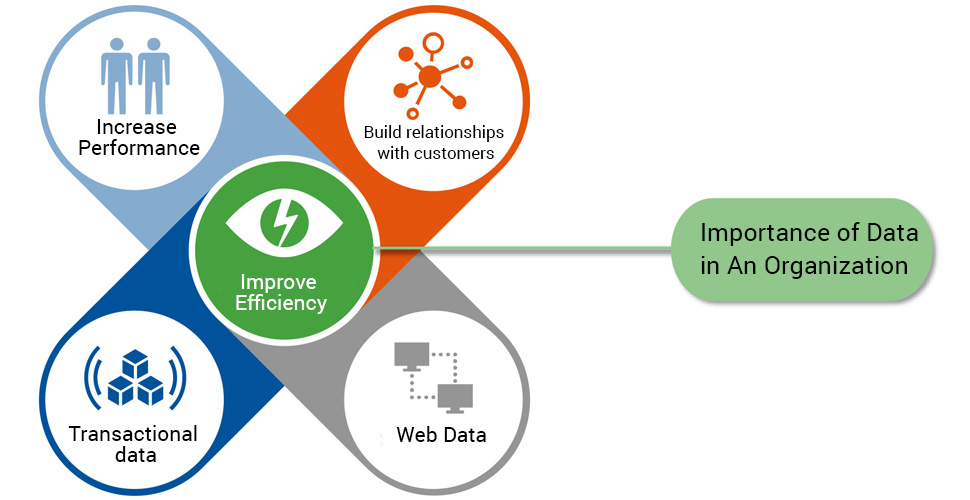Future Trends in Data Analytics !

An Overview
In 2023, companies will increasingly use data collection and analytics in consumer behavior prediction, demand forecasting, and risk management. Businesses will widely adopt Artificial Intelligence (AI) to automate analysis and discovery responses. Augmented Reality (AR) and Virtual Reality (VR) will bring new insights.
As organizations rely on data science, there will be an increased need for data science experts with advanced skills. Growth Jockey can provide the talent and expertise needed to stay competitive in this ever-evolving market.
10 Future Trends in Data Analytics in 2023

1. AI and Machine Learning (ML) Dominance:
AI is predicted to become a mainstream analytical tool used in the analytics industry by 2023. It is expected to offer a $126 billion market opportunity by 2025. Healthcare and retail segments can directly benefit from AI and ML-based technologies due to more accurate diagnoses, more personalized products and services, improved quality of patient care, and cost savings due to the automation of mundane tasks.
2. Automation of Data Analysis:
Automation of core data science tasks will become the norm by 2023. Automated analysis allows businesses to make faster, more accurate decisions and increase their overall efficiency. The spending on AI automation is expected to reach USD 500 billion by 2023.
3. Cloud-based Analytics:
Cloud-based analytics will be the preferred technology because of its scalability, cost-effectiveness, and flexibility. According to Gartner, almost all analytics projects will be on the cloud in 2023. Also, the total spending on public cloud services is projected to reach more than $600 billion by 2023
4. AR and VR:
Acording to the insights of Growth Jockey, AR and VR are two cutting-edge technologies quickly becoming more popular and commonplace. These technologies can change the way businesses operate and interact with their customers. By adding a new dimension to structured data analysis, businesses can offer their customers a more engaging and immersive experience. This will lead to more customers, more sales, and more profits. By 2023, it is estimated that 110 million people will use VR and AR headsets
5. Spatial Analysis:
Spatial analysis is a set of techniques for analyzing and interpreting geographic data to reveal patterns, relationships, and trends. Spatial analysis will become a necessity for businesses because of its ability to locate, interpret, and visualize data in a spatial context. This could be especially useful for enterprises and customers looking to explore new opportunities.
6. Data Visualization:
Visualization of data will become the new normal. Visual data summaries will provide organizations with multiple ways to analyze their data. According to a report by Markets and Markets research, the data visualization market is estimated to reach USD 19.20 billion by 2027.
7. Edge Computing:
Edge Computing is a distributed computing technique that puts data, computing, and storage closer to the data source and away from the cloud. It provides faster access and allows for efficient data processing. Edge computing will process high volumes of data in real time. This will reduce the cost of transmitting data over long distances and enable businesses to respond quickly to changes in the market.
8. Better Data Governance:
Data governance will be a key factor for businesses in 2023. Organizations must ensure that their data remains accurate, consistent, and secure. Data governance involves developing policies and procedures to manage data. It also ensures data is quality controlled and that access is restricted to authorized users. Good data governance can help organizations improve decision-making, reduce costs, and avoid legal and regulatory risks.
9. Blockchain:
Blockchain technology is expected to become widely used in analytics in 2023 because of its secure, tamper-proof nature and distributed data storage. The global market size of Blockchain is expected to reach USD 3273 billion by 2032
10. Natural Language Processing (NLP):
NLP is a field of data science that analyzes written text and spoken words to generate meaningful structures, patterns, and insights. It automates tasks, such as sentiment analysis, question answering, summarization, and more. NLP is rapidly becoming the preferred technology for analytics as it enables businesses to understand user behavior and preferences. According to Markets and Markets research, the NLP market size is projected to reach USD 50 billion by 2027
Why is Data Important?

-
Firstly, data in business analytics can help companies understand their customers better. Companies can assess user behavior, preferences, and trends and identify gaps in their offerings.
-
Secondly, data can help managers better understand their organization's performance. They can spot opportunities and develop strategies to boost operations by evaluating key performance indicators.
-
Thirdly, data will allow businesses to understand the performance of their competitors. With this information, companies can make changes to stand apart from their rivals and stay ahead of the competition.
Growth Jockey believes that Data science plays a critical role in today's digital world, and understanding its importance is essential for businesses and organizations to succeed.
Data Ecosystems Are on the Rise: Why Should You Care?
Data ecosystems are increasingly being used to enable better decision-making and services. By gathering data from multiple sources into one connected platform, data ecosystems allow professionals access to more comprehensive and reliable data.
This is especially true for industries such as healthcare and education, where new data and insights can help drive better decisions.
According to the Harvard Business Review, data ecosystems can help reduce costs and enable companies to gain deeper insights and develop more meaningful customer experiences.
Recent research from the Capgemini Research Institute found that 77% of companies around the world use a data ecosystem. 66% of these companies have become more interested in these ecosystems in the last few years. 48% of companies plan to launch new initiatives soon, and 25% plan to invest at least $50 million in the next 2-3 years.
With the use of data science becoming increasingly important, it is more important than ever to ensure that data ecosystems are secure, reliable, and compliant.
Types of Data Ecosystems
Data Ecosystems can come in two main types: Open and Closed/Industrial.

-
An open data ecosystem is one in which data is collected and shared by everyone within the system.
-
A closed data ecosystem is one in which select members or partners share the data.
These data ecosystems enable companies to share, store and securely communicate data with their customers and suppliers. It allows them to make better decisions and improve their services and products.
Closed/Industrial Data Ecosystems
1. Microsoft Cloud and BMW
Microsoft and the BMW Group introduced the Open Manufacturing Platform. Companies work together on a new project to accelerate open industrial IoT development and form a community for future Industry 4.0 solutions.
2. Skywise by Airbus
This is the aviation industry's main open data platform. Its partner ecosystem comprises over 9,000 connected planes from more than 100 airlines worldwide and over 18,000 unique users.
Using secondary data and insights, a US flagship airline saved $13 million in fuel expenditures per year. Another airline reduced the time it took to report reliability from three weeks to one day.
3. Volkswagen and Amazon Web Services for the Auto Industrial Cloud
Volkswagen is collaborating with AWS to integrate its 124 plant locations under a unified architecture: the Volkswagen Industrial Cloud. The Industrial Cloud goes beyond automation and consists of three parts:
-
the Digital Production Platform
-
a Volkswagen Group App Store
-
the company's shop floor tools and equipment
Open Data Ecosystems
1. Open Data Institute of the UK (ODI)
ODI aims to create an open, reliable data ecosystem by collaborating with businesses and governments. The ODI's worldwide network consists of people, companies, startups, franchises, partners, and governments that support the goal.
2. Global Forest Watch (GFW)
GFW is an open platform that offers data to monitor forests collected from diverse sources. More than 100 organizations have provided the data. Local law enforcement officials utilize the platform to detect risks to forest cover. They examine changes in tree cover caused by external reasons and protect species. GFW is one of the biggest milestones that data ecosystems have achieved.
3. European Data Portal
Organizations and the general public may access open data made accessible across Europe via the EU Data Portal Eighty-two catalogs are ready for usage under various open-data licenses, and over 760,000 datasetsfrom 35 countries are accessible across all significant industries.
Key Challenges
Many key challenges can hinder the future of data ecosystems:
-
Data management is the challenge of organizing data and ensuring the quality of that data. Businesses experience data management problems due to siloed systems and inadequate data storage infrastructure.
-
Data governance is the challenge of setting rules and regulations to regulate how data is handled and used. The McKinsey Global Institute estimates that effective data governance could unlock societal and economic value, with projected savings of $1 trillion to $3 trillion a year
-
Data literacy is the challenge of understanding data and applying it effectively. A study by Intel found that less than one-third of employees had the necessary skills for data science.
-
Data security is the challenge of preventing unauthorized access to data. Many reputable organizations have experienced data breaches including Yahoo, Aadhar, and LinkedIn.
Organizations must address these challenges to avoid data breaches, mismanagement, and lost potential.
Wrapping Up
Data ecosystems have become an essential part of enabling a digital business model, allowing organizations to gain insights into customer trends and discover potential opportunities for innovation. The expansion of data to the core of businesses is creating unprecedented growth potential for ambitious businesses.
At Growth Jockey, our unwavering dedication lies in creating customised AI and ML models that effectively tackle the crucial challenges confronted by our clients across diverse industries. Regardless of the size of your company, whether a small-scale enterprise or a large corporation, you can now leverage the advantages of AI. Take the decisive step towards unlocking the next level of growth for your brand by Contacting us today !








